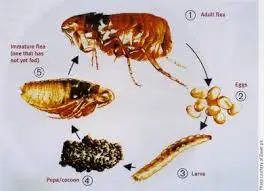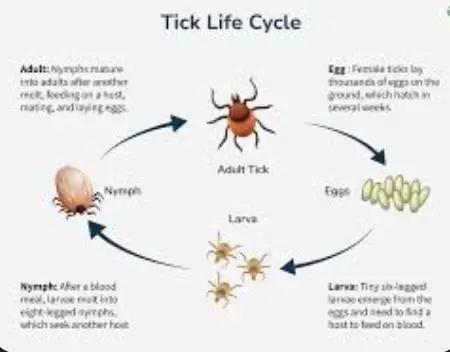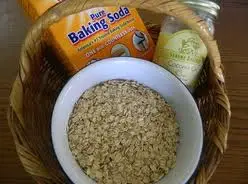Make your home free of fleas and ticks with all the information you will find here at Fleas B Gone.
Are you looking for instructions to kill fleas and ticks to make your home, both inside and outside pest free?
You will find everything you need here. Information and directions to get fleas and ticks out of your house, out of your yard and off your pets with step by step instructions.
Hello everyone, my name is Kimberly and I am the founder of Fleas B Gone.
I Started This Website To Help Others Make Their Homes Free Of Fleas & Ticks
I was irritated, just like I’m sure you are, because I couldn’t find any real information to get fleas or ticks off my pets and out of my home without pages that were dedicated to particular products to purchase.
I decided to share my research with others looking for helpful information to make their homes flea and tick free. I was forced to research all different types of websites, blogs and even Wikipedia to find answers about fleas and I gained a lot of useful knowledge.
I built this website to share what I’ve found with you and appreciate all the feedback from others about what they’ve learned about fleas and ticks along with how they have learned to control them. As a community we can all learn from each other.
Follow This Link For Steps To Get Rid Of Fleas In Your Home
Follow This Link For The Steps To Get Rid Of Ticks In Your Home
There Are 3 Steps To Make Your Home Free Of Fleas
- Killing fleas on your pets
- Killing fleas in your home
- Killing fleas outside in your yard
These 3 steps were essential to keeping fleas out of my house permanently. I will admit it was a lot to do but it worked.
As I researched what fleas are and how they breed and grow it taught me that you have to treat your home inside and outside along with your pets at the same time.
I’m not gonna lie, it was a huge undertaking the first time I did all the steps for home, outside and pet flea removal.
After going through it the first time, I now only need to treat fleas out of precaution so that I never have to go through an infestation flea removal again.
I have all the information on this website to help you get to the same point.
Understanding What Fleas Are Is Very Important To Make Your Home Flea Free
Fleas are very resilient little critters that seem to survive through anything. Fleas have 4 cycles in their lifespan. The egg, larva, pupa and adult flea stages.
When you find the adult fleas in your home, outside or on your pets, you undoubtedly have the other 3 stages around as well.
A lot of people assume, just as I did, that if you see a flea on your pet, you can use a topical flea treatment and the fleas will disappear.
Unfortunately it will take a little bit more than that, you will need to treat all parts of your home to get rid of these pesky creatures.
Below you will find a link to the flea life cycle page. Read this to better understand the fleas, their life cycle and how to get rid of them permanently.
Initially, the first step in getting rid of fleas will be to treat your pets. Pets are typically the hosts for fleas and are the fleas main source of food, blood.
If you don’t have any pets then it’s safe to say that you are the host and you should read more about home flea removal and outside flea removal.
If you don’t have any pets and still have a flea problem
it is probably due to outdoor conditions in your yard. There are many ways to treat your yard for fleas as well as the inside of your home. Make sure that you treat both the inside and outside of your home to completely get rid of fleas and break the flea life cycle.
Make Your Home Free Of Fleas & Protect Your Pets
Fleas can hide very easily in the fur of pets and give them easy access to the blood that they need to survive and reproduce.
When you find a flea on your pets it is almost certain that the other stages of the fleas are throughout your home.
The fleas eggs, larva and pupa stages hid deep into carpets, furniture even cracks of tile, wood or ceramic flooring.
Again, I can’t stress enough that it is crucial that you treat all areas of your home inside and out for fleas to kill them and all of their life stages.
If you find fleas on your kitten or puppy make sure to watch for signs of becoming lethargic or anemic.
These little furballs are especially vulnerable to fleas being that fleas can eat 15 x’s their body weight in blood.
When there are multiple fleas on your puppys and kittens they will start to get sick very quickly and can even die because of fleas.
How To Know If Fleas Are On Your Pets
- Fleas eat blood to survive so you can test your pets fur by adding a bit of water on their coats.
- Rub the water down to the skin, if it turns a reddish brown tint, then you are seeing dropping from the fleas.
- Flea droppings are blood, so they will turn red when water is introduced to it.
Here’s a video explaining how the flea breeds
Make Your Home Free Of Fleas Starting With Your Pets
Make Your Home Free Of Fleas Inside & Outside
After your pets have been treated for fleas, you’ll need to de-flea your home. The reason for treating your home is simple, fleas hide everywhere! Wherever your pet has been, the fleas have followed.
You may not see the fleas but they’re there in one stage or another. The flea life cycle consists of 4 stages, the egg, larvae, pupa and adult fleas. A flea egg is the size of a single grain of salt, put a single grain of salt on your finger and then you will understand how tiny the flea eggs are.
When you have finished the steps to kill the fleas in your home, you should take steps to kill fleas in your yard. If your family and feline friends spend time outside, it’s highly possible that’s where the fleas originated from.
Here Are The Steps To Make Your Home Free Of Ticks
Ticks are tiny but potent parasites that latch onto the skin of animals and humans to feed on their blood. As arachnids, they are related to spiders and mites, making them both resilient and versatile in various environments.
Identifying these pesky critters isn’t always straightforward. They come in different types like the deer tick, lone star tick, and American dog tick. Each species has its quirks, from size and color to preferred hosts. Recognizing the difference can be key in preventing and managing tick problems efficiently.
The life cycle of a tick is pretty complex and involves four stages: egg, larva, nymph, and adult. They require a blood meal at each stage to progress, making them persistent pests. Knowing their life cycle helps in predicting their activity and planning effective prevention strategies.
Certain conditions and habitats make your space attractive to ticks. They thrive in warm, moist areas with abundant hosts. This includes overgrown gardens, piles of leaves, and wooded areas. Keeping your living space neat and sunny might just cut down their opportunities to hitch a ride into your home.
The Dangers of Ticks: Health Risks and Safety Concerns
Ticks aren’t just a nuisance; they pose serious health risks. These small creatures can transmit a range of diseases with their bite, the most notorious being Lyme disease. Caused by the bacterium Borrelia burgdorferi, Lyme disease can lead to symptoms such as fever, headache, and fatigue, eventually affecting the joints, heart, and nervous system if untreated.
It’s not just humans who are at risk. Pets, especially dogs and outdoor cats, are also susceptible to tick-borne diseases. Aside from Lyme disease, ticks can transmit illnesses like ehrlichiosis and babesiosis. Watching for signs like lethargy, loss of appetite, or unusual weakness can help catch these early in your pets.
If you’ve been outdoors and start to notice symptoms like a rash (often resembling a bullseye), fever, or muscle aches, it’s crucial to seek medical advice. Early detection and treatment are essential in managing the effects of tick-borne diseases.
In recent years, tick-borne diseases have been on the rise. Climate change and urban expansion are leading to increased tick habitats, making awareness and prevention strategies more important than ever. Being informed about the risks can help protect you and your family from these little yet impactful pests.
Effective Strategies to Keep Your Home and Yard Tick-Free
For a tick-free home, regular inspection and cleaning are essential. Frequently check areas like baseboards, pet areas, and even inside closets. Vacuum carpets and upholstery, wash pet bedding regularly, and seal any cracks or openings that might usher ticks inside.
Yard maintenance also plays a big role. Mow the grass regularly, clear leaf litter, and trim shrubs to reduce shady spots where ticks thrive. Creating a barrier of wood chips or gravel between lawns and wooded areas can help too.
When tackling outdoor spaces, you might consider professional pest control services if ticks are a persistent issue. They can assess and treat your property more intensively than DIY methods alone.
For a DIY approach, natural repellents like cedar oil-based sprays or diatomaceous earth can deter ticks. However, always verify the safety of these methods, especially if children and pets frequent the area.
Keeping pets tick-free involves a mix of routine checks and preventive products. Brush through their fur regularly and use tick repellents recommended by veterinarians. Keeping your pets on a tick prevention regimen is crucial.
Products like tick collars, topical treatments, and oral medications provide an effective barrier against ticks. Consult with a vet to choose the best option for your pet’s breed, size, and lifestyle.
In Conclusion Of Making Your Home Free Of Fleas & Ticks
I hope that you have found the information you need to get rid of fleas and ticks in all areas of your home. Just follow any of the links to go to other pages and you will find step by step instructions to help you.
If you have any information about your own experiences with getting rid of fleas and ticks, please share them below in the comments section. Sharing any knowledge you have about these pests and ways that have worked for you to get rid of them is helpful for everyone.
If you have any questions about flea removal or tick removal please leave your question below in the comments section as well and we will do our best to help you.
Thank you for visiting Fleas B Gone, have a great day 🙂
Following Are Some Informative Articles About Killing Fleas Naturally
If you don’t like to use harsh chemicals and prefer all natural alternatives instead, I have some articles with recipes that you may find useful.
Getting rid of fleas naturally can be just as effective as using chemical based products, however they may take a little more work.











This is a necessary site, I think. I was wondering–will you be adding natural solutions to your site? I think it would be a wonderful idea for us organic freaks.
Hello Max, yes, I will be adding a natural way to get rid of fleas. I’ve been researching it, plus I’ve had a lot of experience with natural ways to get rid of fleas because I have a lot of children in my home and am not really big on chemicals only..Even thought they do work. I’ll keep you updated on the new page!